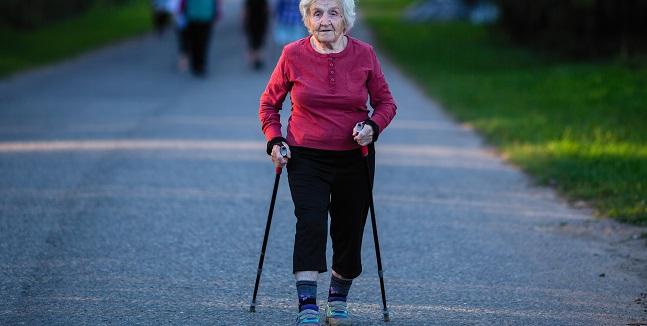VOYAGER PAD: CAD Subanalysis Finds Fewer CV, Limb Events With Rivaroxaban
Although serious bleeding was uncommon, one expert says bleeding risk stratification is an important next step.

Adding rivaroxaban to standard care can reduce the incidence of limb, heart, and brain events in patients with PAD who have undergone a recent peripheral revascularization, according to new data presented at the virtual European Society of Cardiology (ESC) 2020 Congress.
These results from a VOYAGER PAD subgroup analysis are in line with those of the COMPASS trial, which similarly found that a 2.5-mg, twice-daily dose of rivaroxaban (Xarelto; Bayer/Janssen) plus low-dose aspirin reduced the risk of the composite of CV death, MI, or stroke compared with aspirin alone in patients with stable CAD, PAD, or both.
VOYAGER PAD pushes the potential for benefit even further by showing a reduction in limb events with rivaroxaban even in people without known CAD--beyond the CV and ischemic stroke benefits in those with CAD—but at the expense of increased risk of bleeding compared with placebo, noted VOYAGER PAD lead investigator William R. Hiatt, MD (University of Colorado School of Medicine, Aurora), in his presentation.
“These findings suggest heterogeneity of prognostic risk for ischemic events in lower-extremity PAD patients and may support shared decision-making with patients,” he said.
Commenting for TCTMD, Sahil Parikh, MD (NewYork-Presbyterian/Columbia University Irving Medical Center, New York, NY), said this subanalysis confirms that rivaroxaban is an option for carefully selected PAD patients with stable CAD like those in COMPASS, or those with a recent limb revascularization and concomitant CAD.
“Importantly, I think it suggests that there's a discrete mechanism that seemingly really improves the limb events in this patient population,” he said.
‘Remarkable Consistency’ in Risk Reduction
VOYAGER PAD enrolled 6,564 symptomatic PAD patients from 34 countries who had undergone limb revascularization in the previous 10 days. Patients were randomly assigned to receive rivaroxaban 2.5 mg twice daily or placebo; all also received aspirin 100 mg daily. The subanalysis presented at ESC focused on the approximately one-third of patients (n = 2,067) with concomitant CAD. Compared with patients who did not have CAD, those who did were older and more likely to have CV risk factors, including hypertension, diabetes, and hyperlipidemia. They also were more likely to have concomitant carotid disease and heart failure.
The primary endpoint was a five-point composite of acute limb ischemia, major amputation of vascular etiology, MI, ischemic stroke, and CV death. Among those with PAD and CAD, the endpoint occurred in 24.3% of those on placebo versus 18.9% of those on rivaroxaban at 3 years (HR 0.78; 95% CI 0.64-0.95). In patients with PAD only, the endpoint occurred in 17.9% of those on placebo versus 16.1% on rivaroxaban (HR 0.89; 95% CI 0.77-1.04).
Hiatt noted a “remarkable consistency” in reduction for all five components of the primary endpoint in the rivaroxaban cohort compared with placebo. Similarly, for the numerous secondary endpoints, there were significant reductions in risk for those with and without CAD.
TIMI major bleeding was increased in patients with and without coronary disease randomized to rivaroxaban versus placebo, but rates of intracranial hemorrhage or fatal bleeding occurred in less than 1% in each group, respectively.
“The efficacy and safety of rivaroxaban in PAD are consistent regardless of CAD, with no significant interactions,” Hiatt noted. “However, the absolute benefits of rivaroxaban appear greater in those with CAD, particularly for myocardial infarction and ischemic stroke.”
Important Considerations
To TCTMD, Parikh said the next steps for what is currently an off-label indication of rivaroxaban will be understanding how to use anticoagulant therapy in PAD patients in the safest possible manner. To do that, bleeding scores to gauge individual risk will be needed, he said, and may be forthcoming from additional analyses of both COMPASS and VOYAGER PAD.
“As with any of these more potent anticoagulants or antiplatelet regimens, bleeding is always going to be the countervailing force to efficacy with respect to ischemic benefit. Until there's a good risk stratification score, we're going to have to use our judgment,” Parikh said. While the data from both COMPASS and VOYAGER PAD appear reassuring about the low risk of serious bleeding events, he added, higher risk is problematic and research into bleeding mitigation strategies specific to this patient population would be helpful.
“For example, there hasn't been a lot of discussion about whether we should be giving concomitant [proton pump inhibitors] to these patients to reduce gastric bleeding, and so some of those details need to be drilled down,” he noted. “None of this is yet adapted into the guidelines—but I'm sure it will be in the next iteration of the PAD guidelines and, more importantly, in the next iteration of the overall global guidelines for anticoagulant therapy.”
L.A. McKeown is a Senior Medical Journalist for TCTMD, the Section Editor of CV Team Forum, and Senior Medical…
Read Full BioDisclosures
- Hiatt W, et al. VOYAGER PAD: Efficacy and safety of rivaroxaban in patients with PAD undergoing revascularization with and without coronary artery disease. Presented at: ESC Congress 2020. August 31, 2020.
- The study was funded by Bayer AG and Janssen Research and Development.
- Hiatt reports grant support from Bayer, Janssen, and Amgen.
- Parikh reports institutional research funding from Abbott Vascular, Boston Scientific, Surmodics, Shockwave Medical, and TriReme Medical; serving on the advisory boards of Abbott Vascular, Boston Scientific, Medtronic, Janssen, CSI, and Philips, and having received honoraria from Terumo and Abiomed.


Comments